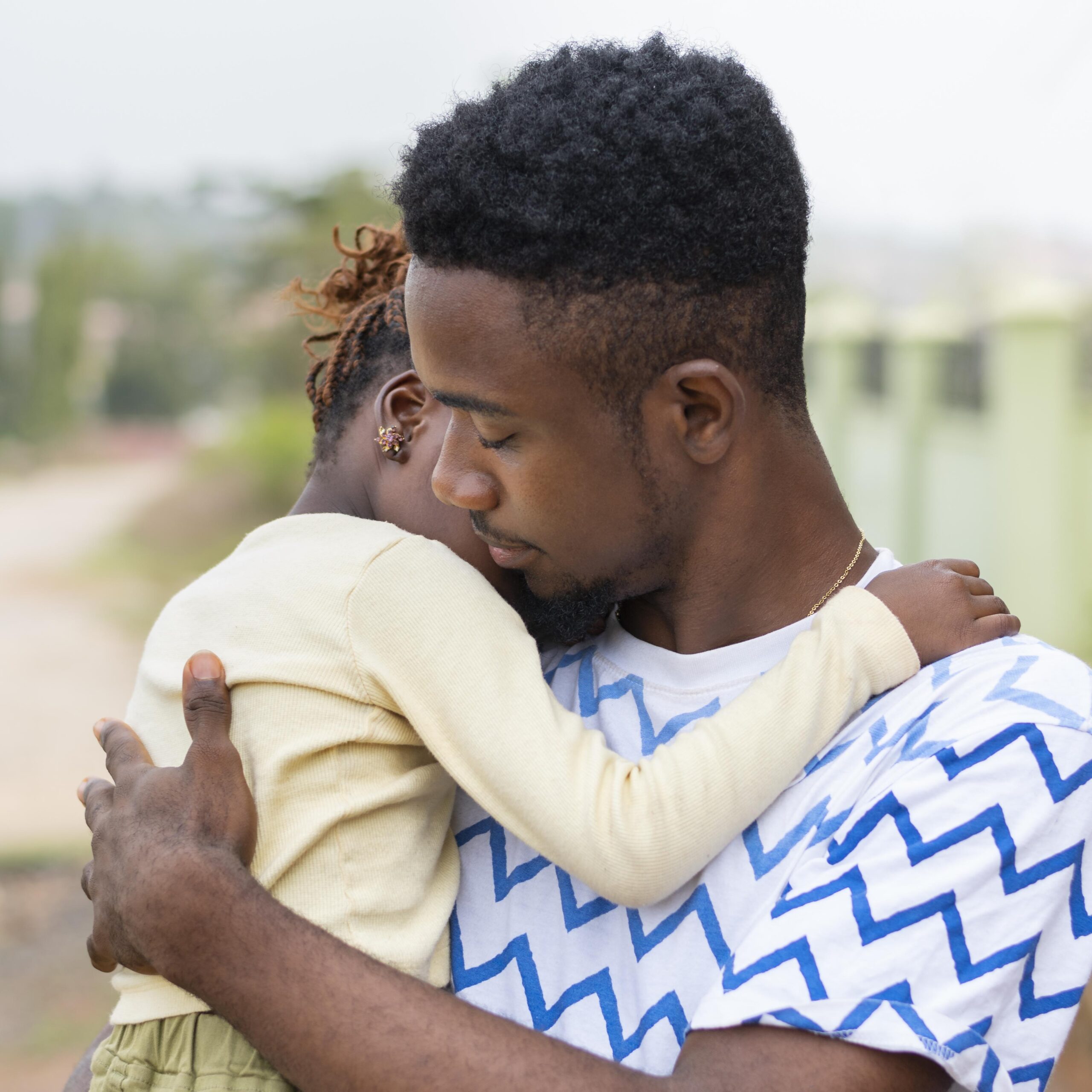Siaya school girls decry period poverty despite free government sanitary towels

When 17-year-old Awino (not her real name) received her first menses three years ago, she was lucky to get sanitary pads from her elder sisters. Earlier that day she was in the forest fetching firewood. Unaware of what to do, she decided to go back home and ask for help.
Luckily, Awino found her elder sister at home, who advised her to take a bath before explaining how to use a sanitary pad, which fortunately was in the store. However, as the months moved by, she started running out of stock, making her dependent on her mother.
“Normally when I am in school, I use three pieces daily, but there are times when I have only one piece left and that is what I use till the following day unless a friend lends me hers,” the form three student says.
Adolescent school girls excited upon receiving sanitary pads’ in a past distribution exercise. Photo credit/Simama Na Dada Initiative
“The first time we were given sanitary pads in schools was during a girl’s talk session,” says Awino, adding, “They are often stored in the office of the teacher in charge of guidance and counselling, Awino explains. “When you go to her, she gives you only one piece to use while in school then tells you to go ask your parents to buy the rest for you.”
Awino’s situation is similar to that of her 16-year-old neighbour, Akoth (not her real name), who experienced her first menses about two years ago.
“That day I was home and I had a packet of pads that we had been given in school while in class 7. Since then, I tell mum to buy me pads whenever I am in need, “says the fourth-born daughter in a family of six children.
Prohibitive costs
The cost of purchasing sanitary pads for girls in Siaya county remains prohibitive for most mothers who are struggling to afford daily meals for the whole family. Despite Awino’s mother being free to openly talk about reproductive health issues with her daughters, her economic status does not allow her to easily afford these important products.
“It forces me to look for money by all means, even if it involves selling chicken at the market or borrowing money. “Sometimes that is not possible,” the mother of five girls adds. This forces her daughters to borrow pads from their friends, which she then refunds later when she gets the money.
Akoth’s mother says it is even tougher for her, being a widow. “Pads are a burden because I am the sole breadwinner and I have to take care of the cost of farming and food,” she explains, noting that often money is hardly available whenever her daughter asks her for sanitary towels.
“So, I have most of the time borrowed that money because this is something I have to address, she says. Her tribulations do not end with buying the pads. “I again have to look for money to refund,” the forty-year-old mother of two girls explains.
Ongoing interventions
The need to resolve the sanitary pads challenges among adolescents and teenage girls in rural Kenya has seen different non-governmental organisations conducting menstrual hygiene programs come on board. One of such organisations is the Simama Na Dada Initiative, which was founded nine years ago and currently operates in 28 counties.
Sylvia Khasoa Maina, the Simama Na Dada Initiative founder. Photo shared by Sylvia Khasoa
“We are creating awareness, advocating, and sensitizing school-going girls and teenage mothers on menstrual hygiene management and the provision of sanitary towels and menstrual hygiene products to ensure we keep them in schools,” says Sylvia Khasoa Maina, the Simama Na Dada Initiative founder.
Through the menstrual hygiene program, Sylvia and her team are upbeat that the communities that did not accept speaking about menstruation now do so willingly.
However, they note that getting the pads to their girls remains a challenge due to resource limitations. Despite the constraints, Sylvia says that more than 8, 000 girls have benefited from her organisation’s mentorship programs and the distribution of sanitary towels.
RELATED: Boda boda riders culprits as Kenyan girls exchange sex for sanitary pads
Efforts to get an official from the National Government Affirmative Action (NGAAF) to comment on the status of the sanitary pad’s distribution project did not yield fruits. The officials said the project is under the ministry of education.
Officials in Siaya County also declined to comment on the matter arguing that the government-supported sanitary pads project falls under the ministry of education which is managed at the national government level.
However, while releasing the Kenya Certificate of Secondary Education (KCSE) 2021 examination results in late April, education Cabinet Secretary Prof. George Magoha expressed his disappointment at the move by Members of Parliament of slashing money allocated for the purchase and distribution of sanitary pads for learners in the 2022/2023 financial year budget. In the budget, he said only Ksh. 260 million was allocated for the government-supported sanitary pads distribution project, down from the previous Ksh. 470 million.
Education Cabinet Secretary Prof. George Magoha taking part in the distribution of sanitary pads to girls of primary schools in Gatundu South in Kiambu county. Photo from Ministry of Education twitter.
Prof. Magoha claims that the government has spent Ksh 3.017 billion on sanitary towels for 7, 515, 864 girls since 2018 and added that the Ministry of Education has been transparent and accountable for every cent that was allocated for the project, which he describes as a matter of human dignity.
“When the child gets the pack of sanitary towels and takes them home, it becomes family property and there is not very much the government can do, so the more you give them the better,” he said.
Prof. Magoha also said that the ministry of education eliminated traders involved in the sanitary pads project after an order from the President. As a result, the ministry gets pads at a very minimum cost to spend the money allocated in the best possible way while at the same time enabling more girls to access sanitary pads.
“We go to the factory and get the cheapest product, and they are produced and they are taken to the field,” he said.
While Prof. Magoha has been taking part in the distribution of sanitary towels to girls in schools, Awino and Akoth can confirm that the government-funded sanitary pad program is not enough. For instance, Akoth, who is now in form one, says that she only received the pads once during her time in primary school. On the other hand, Awino, who is now in form three has received the government-funded sanitary pads only twice.
“That is, once when I was still in primary school and the second time while in secondary school, “she says.
Reproductive health specialists describe menstrual hygiene as the process beginning from when a girl or a woman starts her period to the end of it. This also includes how she takes care of herself and manages the time she is taking care of her pants, innerwear, and even the people around her when she is having her periods.
“At that particular moment you are susceptible to things like yeast infections,” So most of the complaints that we get in our facilities are what we call bacillus infections, yeast infections, and some fungi,” Dr Stella Kamau, a reproductive health specialist explains.
Dr Stella attributes the bacterial and fungal infections during menstruation periods to the girls’ low haemoglobin levels. She, therefore, stresses the need to maintain high cleanliness to avoid such issues.
Featured Photo: Simama na Dada Initiative




